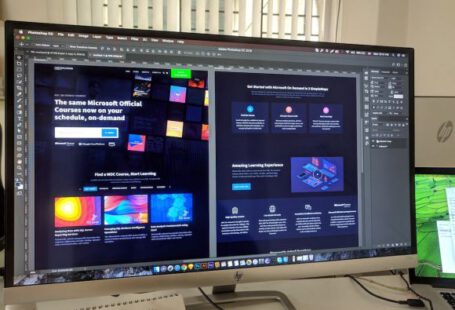Mobile apps have become an integral part of our lives, providing convenience, entertainment, and access to essential services. However, not all users can fully benefit from these apps due to various accessibility barriers. It is crucial for app developers to ensure that their creations are accessible to everyone, including individuals with disabilities. In this article, we will explore the key considerations for mobile app accessibility and how developers can make their apps more inclusive.
1. Design with inclusivity in mind
The design stage is where developers lay the foundation for an accessible app. It is essential to consider the needs of users with visual impairments, hearing loss, motor disabilities, and cognitive challenges. Design elements like color contrast, font size, and spacing should be carefully chosen to ensure readability for all users. Providing alternative text for images and captions for videos is also crucial for users who rely on screen readers.
2. Implement clear and consistent navigation
Navigation is a critical aspect of mobile app accessibility. Users should be able to navigate through the app easily and intuitively. Implementing clear and consistent navigation elements, such as menu bars, buttons, and icons, can greatly enhance the user experience. It is also important to provide alternative navigation options for users who may have difficulty using touch gestures, such as those with motor disabilities.
3. Make content accessible
Content accessibility is vital for users with disabilities. Developers should consider providing multiple ways to access content, such as audio descriptions for videos and transcripts for podcasts. Ensuring that text is resizable and adjustable to different screen sizes is also important for users with visual impairments. Additionally, providing closed captions for videos can benefit users with hearing loss.
4. Test with assistive technologies
To ensure the accessibility of a mobile app, it is crucial to test it with assistive technologies. Screen readers, voice recognition software, and screen magnifiers can help identify potential accessibility issues and allow developers to make necessary improvements. Testing with real users who have disabilities can also provide valuable insights and feedback for enhancing app accessibility.
5. Consider international accessibility guidelines
Accessibility guidelines, such as the Web Content Accessibility Guidelines (WCAG), provide a framework for developers to follow when designing and developing accessible apps. These guidelines outline best practices and recommendations for creating inclusive digital experiences. Adhering to these guidelines can help ensure that an app is accessible not only to individuals with disabilities but also to users from different cultural backgrounds and language preferences.
6. Provide customization options
Every user is unique, and their accessibility needs may vary. Providing customization options within the app can empower users to tailor their experience according to their preferences and requirements. For example, allowing users to adjust font sizes, color schemes, or enable/disable certain features can greatly enhance usability for individuals with different abilities.
7. Regularly update and improve accessibility features
Mobile app accessibility is an ongoing process. As technology evolves and new accessibility features become available, it is essential for developers to stay updated and implement these improvements in their apps. Regularly reviewing and updating accessibility features can ensure that the app remains inclusive and up to date with the latest accessibility standards.
In conclusion, mobile app accessibility is crucial for ensuring that individuals with disabilities can fully participate in the digital world. By considering design, navigation, content accessibility, testing, international guidelines, customization options, and regular updates, developers can create mobile apps that are inclusive and accessible to all users. Making mobile apps accessible not only benefits individuals with disabilities but also enhances the overall user experience for everyone. Let us strive to create a more inclusive digital environment where everyone can participate and thrive.





